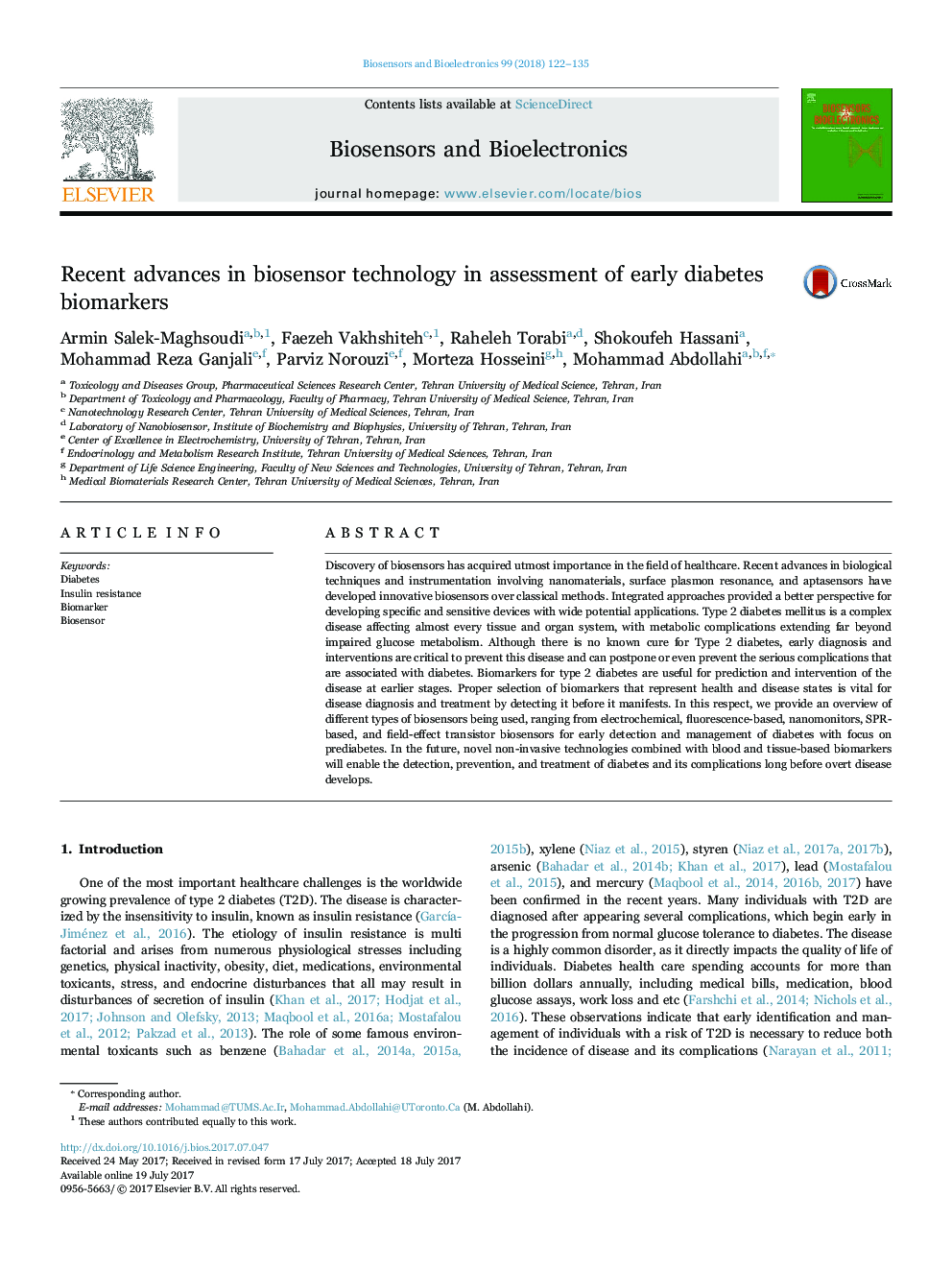| Article ID | Journal | Published Year | Pages | File Type |
|---|---|---|---|---|
| 5031296 | Biosensors and Bioelectronics | 2018 | 14 Pages |
â¢Diabetes in the world is growing very fast.â¢Some environmental toxicant may cause diabetes.â¢Biosensing platform of T2D biomarkers helps early diagnosis of disease.â¢Biosensors with various transduction systems and biorecognition elements can be built.
Discovery of biosensors has acquired utmost importance in the field of healthcare. Recent advances in biological techniques and instrumentation involving nanomaterials, surface plasmon resonance, and aptasensors have developed innovative biosensors over classical methods. Integrated approaches provided a better perspective for developing specific and sensitive devices with wide potential applications. Type 2 diabetes mellitus is a complex disease affecting almost every tissue and organ system, with metabolic complications extending far beyond impaired glucose metabolism. Although there is no known cure for Type 2 diabetes, early diagnosis and interventions are critical to prevent this disease and can postpone or even prevent the serious complications that are associated with diabetes. Biomarkers for type 2 diabetes are useful for prediction and intervention of the disease at earlier stages. Proper selection of biomarkers that represent health and disease states is vital for disease diagnosis and treatment by detecting it before it manifests. In this respect, we provide an overview of different types of biosensors being used, ranging from electrochemical, fluorescence-based, nanomonitors, SPR-based, and field-effect transistor biosensors for early detection and management of diabetes with focus on prediabetes. In the future, novel non-invasive technologies combined with blood and tissue-based biomarkers will enable the detection, prevention, and treatment of diabetes and its complications long before overt disease develops.
